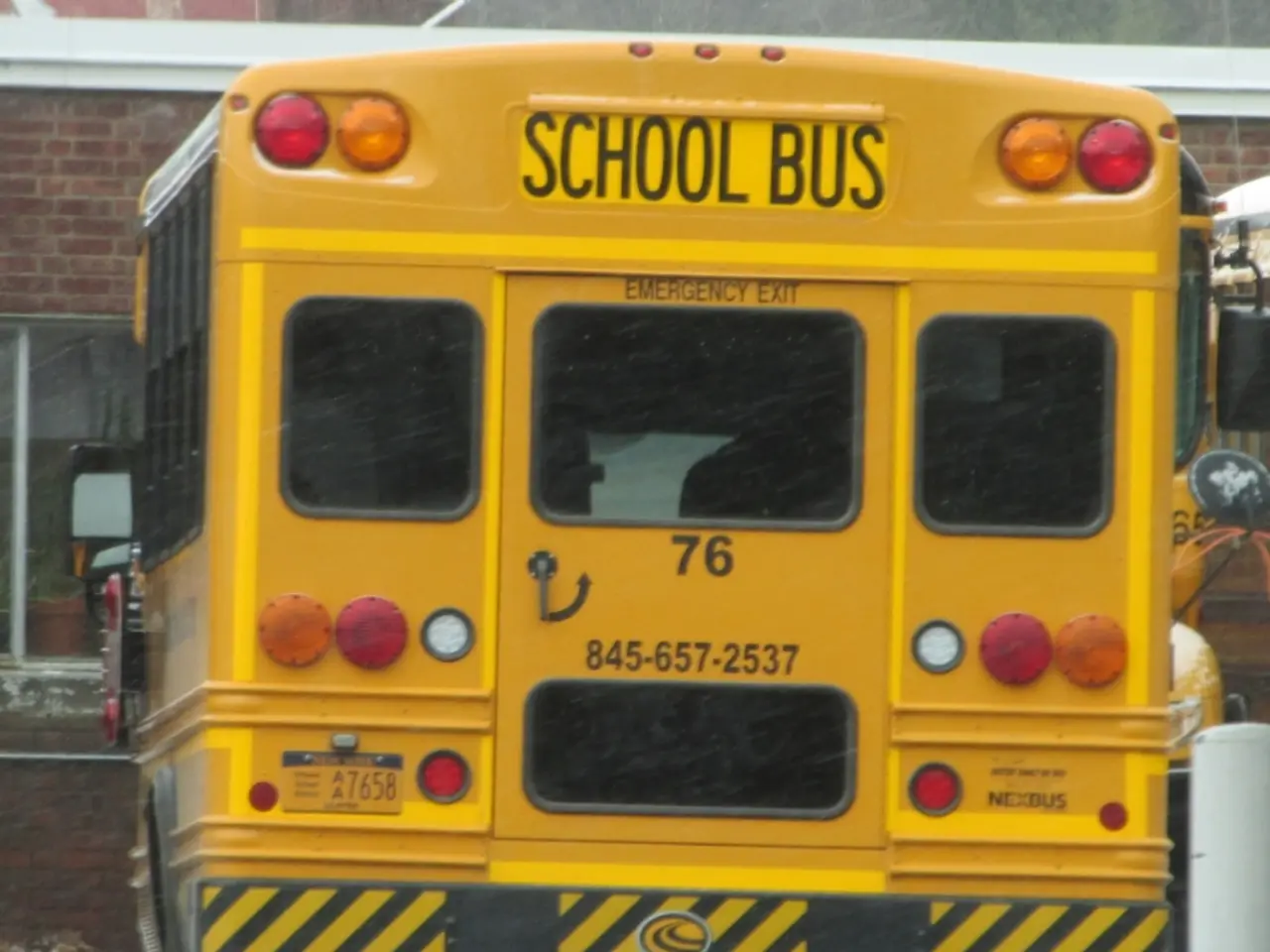Trump's proposed bill implications for student loans and educational options
President Trump's "One Big Beautiful Bill" (OBBB), signed into law on July 4, 2025, has a profound impact on student loans and school choice options in the United States. The bill introduces stricter borrowing limits, reduces repayment flexibility, and tightens eligibility for federal aid programs.
### Impact on Student Loans
The bill introduces a lifetime borrowing cap on federal student loans, with a limit of $257,500 for undergraduate and graduate students, excluding Parent PLUS loans. For many graduate and professional programs, the cap is much lower, with a notable $100,000 lifetime maximum for graduate students and the termination of the Grad PLUS loan program.
Starting July 2026, new borrowers will have only two repayment plans: a Standard Repayment Plan with fixed payments and terms from 10 to 25 years, and a new Repayment Assistance Plan (RAP), which is income-driven but requires up to 30 years of payments before any forgiveness. Existing income-driven repayment plans like IBR, PAYE, and SAVE will be phased out by 2028. This change is expected to increase monthly payments for many borrowers.
The bill also reinstates federal taxation on forgiven debt after December 31, 2025, making forgiveness less beneficial. However, the federal tax deduction for student loan interest remains at a maximum $2,500 per year. Stricter federal limits and repayment requirements may push more students toward private loans, which lack the protections and flexibility of federal loans.
The bill also restricts federal student aid eligibility to programs that demonstrate graduates earn more than non-participants, tightening access. Additionally, student loan garnishments (wage, tax refund, Social Security) could increase with the administration signaling a willingness to resume and expand them for borrowers in default.
### Impact on School Choice Options
The bill includes changes to Pell Grant awards by limiting them and introducing institutional authority to impose loan limits at a program level, effectively controlling student borrowing within specific programs. It also increases withdrawal limits for 529 college savings plans, providing families with more flexibility in managing education savings, potentially supporting school choice in terms of financing options.
While specific direct expansions of school choice options (such as vouchers or charter school funding) are not detailed in the bill, the overall tightening of federal aid and loan options could indirectly affect the affordability and accessibility of various educational institutions, influencing family decisions regarding school choice.
### Summary
The 2025 tax and spending bill signed by President Trump imposes tighter federal student loan borrowing caps, reduces repayment plan options, and reinstates federal taxation on forgiven debt. These measures increase borrowing costs and reduce federal borrowing flexibility, likely making college less affordable for many students. Additionally, changes to federal aid eligibility and Pell Grants may further restrict access. While some adjustments to 529 plan withdrawal limits could aid school choice financially, the overall impact tends to constrain financing options for postsecondary education and could push students toward riskier private loans.
The Trump administration's megabill continues to deliver on a promise to promote universal school choice, with changes to Pell Grants and 529 plans potentially providing families with more flexibility in financing various educational options. However, the bill's stricter borrowing limits and reduced repayment flexibility may make college more expensive for many students and families.
- The OBBB introduces stricter borrowing limits on federal student loans, with a lifetime cap of $257,500 for undergraduate and graduate students, and a maximum of $100,000 for graduate students, potentially making college more expensive.
- The bill's changes in federal student aid eligibility requirements and the termination of the Grad PLUS loan program could restrict access to education for some, impacting both business and immigration by limiting the available workforce.
- With the reinstatement of federal taxation on forgiven debt and a shift towards income-driven repayment plans, the political landscape may change as students and families grapple with increased financial burdens, news headlines, and conversations surrounding student loans becoming more frequent.




